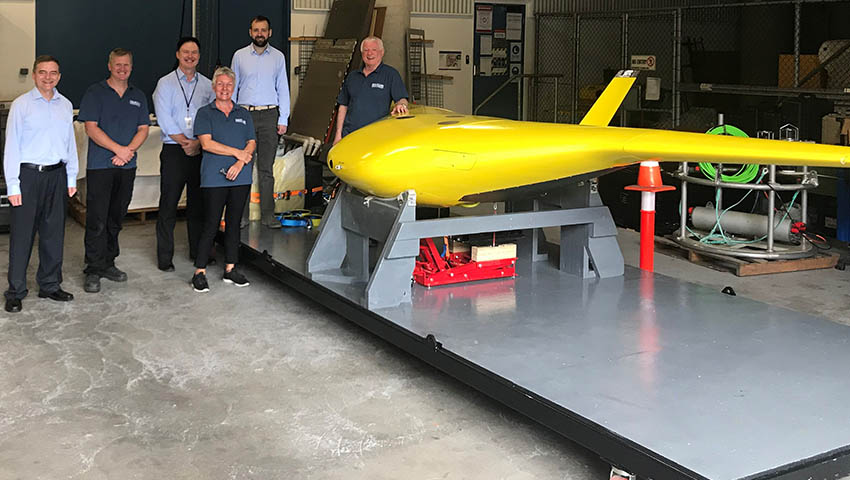Sydney-based Ron Allum Deepsea Services (RADS) has announced the successful delivery of Deep Ray, a potentially high-performance autonomous undersea glider, to Defence following a research, development and testing contract supported by the Defence Innovation Hub.
To continue reading the rest of this article, please log in.
Create free account to get unlimited news articles and more!
RADS, an Australian SME specialising in the design and manufacture of custom underwater vehicles, worked collaboratively with Defence Science Technology Group’s Maritime Division to develop a detailed system specification, design the optimal shape and undertake a demonstration program to verify the project’s objectives.
RADS undertook the manufacture of the vehicle incorporating their existing intellectual property in syntactic foam (structure, shape, finish), battery systems (power, endurance) and motors (propulsion) customised to suit the new innovation. Defence developed the Flight Control System to provide the vehicle’s autonomous control which was integrated into the RADS design of both software and hardware elements.
RADS was able to demonstrate Deep Ray’s potential for deep sea use through a range of agreed performance criteria including depth capability, stability, buoyancy, manoeuvrability, durability and endurance, additionally, the glider included the ability to carry a range of Defence payloads.
Ron Allum, RADS managing director, said, "Although the test and demonstration program was limited due to schedule limitations, Deep Ray has demonstrated its potential as an autonomous system with capability for depth, manoeuvrability and payload that would benefit from further testing and development."
This Demonstration phase was ultimately to verify Deep Ray’s potential as an autonomous system for front-line remote area undersea acoustic surveillance and determine feasibility to progress to prototype development.
In addition to Deep Ray’s demonstration results, this innovation program also resulted in the registration of two patents by RADs which included the vehicle’s shape and its balanced piston pump.
"The next phase would allow deep water trials of the Deep Ray Vehicle thus verifying the vehicle’s manoeuvrability, endurance and control beyond simulation and analysis, and enable prototype design and development. This phase would complement Defence’s initial investment into the Deep Ray vehicle," Allum added.
RADS also developed initiatives relating to Deep Ray’s vehicle control network, energy systems, variable buoyancy engine, composite and syntactic manufacturing processes and the design of key components such as the emergency ascent system, electronics pressure vessel, VBE level-meter, flow restrictor, solenoid valve and prime pump assembly.
Allum explained, "It aligns with the 2020 Defence Force Structure Plan, which prioritises investment in emerging technologies including a focus on the adoption of autonomous systems for undersea warfare."
RADs has benefited greatly through this collaborative process with Defence and prides itself on delivering a high quality, sovereign defence innovation with potential to both grow a niche Australian skills base and deliver a cutting-edge defence capability.
Stephen Kuper
Steve has an extensive career across government, defence industry and advocacy, having previously worked for cabinet ministers at both Federal and State levels.

 Login
Login








